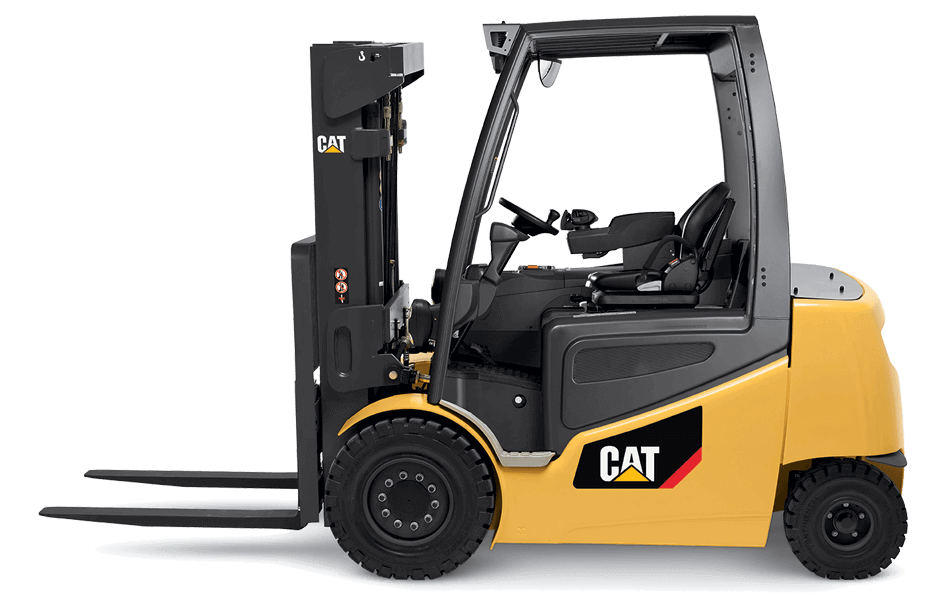Sit-Down Rider Forklifts: The Workhorse of Material Handling

A sit-down rider forklift is a versatile industrial vehicle designed for operators to sit while driving. It’s ideal for heavy-duty material handling tasks, offering efficiency, reliability, and operator comfort.
Introduction
In the fast-paced world of material handling, efficiency and reliability are paramount. Sit-down rider forklifts have long been the workhorse of warehouses, distribution centers, and manufacturing facilities. These versatile machines are designed for operators to sit while driving, making them suitable for extended shifts and heavy-duty work. In this blog post, we will explore the world of sit-down rider forklifts, review the top 10 selling models along with their specifications, and discuss key considerations for companies when deciding between purchasing new or used forklifts, leasing, or renting.
Top 10 Selling Sit-Down Rider Forklift Models
- Toyota 8-Series (Model: 8FGCU25)
- Capacity: 5,000 lbs
- Lift Height: 189 inches
- Engine: Gasoline/LPG
- Notable Features: Toyota’s renowned reliability, ergonomic design, and System of Active Stability (SAS) for enhanced safety.
- Hyster S50FT
- Capacity: 5,000 lbs
- Lift Height: 189 inches
- Engine: LP Gas
- Notable Features: Robust construction, excellent visibility, and responsive handling.
- Yale GLP050VX
- Capacity: 5,000 lbs
- Lift Height: 189 inches
- Engine: LPG
- Notable Features: Comfortable operator compartment, advanced technology, and exceptional maneuverability.
- Caterpillar GP25N
- Capacity: 5,000 lbs
- Lift Height: 187 inches
- Engine: LPG
- Notable Features: Rugged build, efficient fuel consumption, and operator-friendly controls.
- Clark C30L
- Capacity: 6,000 lbs
- Lift Height: 189 inches
- Engine: Diesel
- Notable Features: Strong lifting capacity, durability, and low emissions.
- Komatsu FG25T-16
- Capacity: 5,000 lbs
- Lift Height: 188 inches
- Engine: Gasoline/LPG
- Notable Features: Versatile, ergonomic design, and enhanced safety features.
- Mitsubishi FGC25N
- Capacity: 5,000 lbs
- Lift Height: 189 inches
- Engine: LPG
- Notable Features: Reliable, energy-efficient, and operator comfort.
- Nissan K25
- Capacity: 5,000 lbs
- Lift Height: 187 inches
- Engine: Gasoline/LPG
- Notable Features: Smooth operation, low noise levels, and sturdy construction.
- Doosan G25E-5
- Capacity: 5,000 lbs
- Lift Height: 188 inches
- Engine: LPG
- Notable Features: Strong performance, ergonomic design, and reliability.
- Hyundai 30L-9
- Capacity: 6,000 lbs
- Lift Height: 187 inches
- Engine: Diesel
- Notable Features: Efficient fuel consumption, robust build, and operator-friendly controls.
Considerations for Companies
When a company is in the market for a sit-down rider forklift, several considerations come into play. The choice between purchasing new or used, leasing, or renting should be based on various factors:
- New vs. Used:
- New: Purchasing a new forklift offers the latest technology, warranty coverage, and peace of mind. It’s ideal for long-term commitments and businesses with specific, ongoing needs.
- Used: Used forklifts can significantly reduce upfront costs. They are suitable for businesses on a budget or those with fluctuating material handling demands. Ensure thorough inspections and maintenance history when buying used.
- Leasing:
- Leasing provides financial flexibility by spreading costs over time. It’s suitable for companies that prefer to preserve capital, want to regularly upgrade to newer models, or have seasonal demands.
- Renting:
- Renting is an excellent option for short-term projects, peak seasons, or unforeseen spikes in material handling requirements. It minimizes upfront costs and provides flexibility in fleet size.
- Maintenance and Service:
- Regardless of your choice, regular maintenance and servicing are essential to ensure forklift longevity and safety. Consider maintenance contracts or in-house servicing capabilities.
- Operator Training:
- Proper operator training is crucial for safety and efficient operation. Ensure that your team is well-trained to handle the specific forklift model you choose.
- Ergonomics and Safety:
- Evaluate forklift ergonomics and safety features to provide a comfortable and secure working environment for operators while minimizing the risk of accidents.
Final Thoughts
Sit-down rider forklifts are the backbone of material handling operations, offering reliability and efficiency in various industries. When choosing a sit-down rider forklift, carefully assess your company’s needs, budget, and operational requirements. Whether you opt for purchasing new or used, leasing, or renting, the right forklift model can enhance productivity and safety while optimizing your material handling processes.

